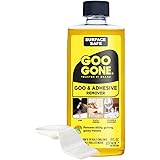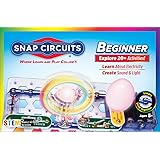It was a typical Saturday morning, filled with the usual hustle and bustle of tidying up the house. As the cleaning supplies were gathered, a familiar thought often crept in: “How much are these bottles actually costing me, and what exactly am I spraying around my home?” This common contemplation is shared by many who are looking for ways to maintain a clean living space without the burden of excessive expenses or exposure to potentially harsh ingredients. In the accompanying video, the practicality and benefits of making your own cleaning solutions are thoroughly explored, demonstrating that effective cleaning does not necessitate a cabinet full of pricey, chemical-laden products.
The movement towards DIY cleaners is gaining considerable momentum, not just as a passing trend, but as a sustainable and financially savvy lifestyle choice. It is understood that while all cleaning products contain chemicals, a distinction can be made between gentle, everyday ingredients and those that might require personal protective equipment or pose risks to pets, children, or household surfaces. The focus, as shown in the video, is on crafting three essential homemade cleaning products that can effectively address approximately 80% of typical household cleaning tasks. These natural cleaning solutions offer a significant cost reduction, moving from several dollars per bottle to mere pennies, making them an attractive option for anyone looking to save money cleaning and embrace a more eco-friendly cleaning regimen.
The Compelling Case for Homemade Cleaning Solutions
The shift towards preparing DIY cleaning products is often motivated by a dual concern: financial prudence and health awareness. When considering the cumulative cost of store-bought cleaning sprays, wipes, and specialty detergents over a year, the expenditure can become quite substantial. Conversely, the ingredients for homemade cleaning products, such as water, vinegar, and a small amount of dish soap, are typically very inexpensive and readily available. This cost-effectiveness is a primary draw for many households. Beyond the economic benefits, the health implications of conventional cleaning agents are a significant factor. Many commercial products contain volatile organic compounds (VOCs), phthalates, and other synthetic fragrances that can contribute to indoor air pollution and, for some individuals, trigger allergic reactions or respiratory issues. By opting for natural cleaning solutions, one gains greater control over the ingredients used, thereby minimizing exposure to potential irritants and promoting a healthier home environment.
Understanding Harsh Chemicals in Store-Bought Products
While the word “chemical” often carries a negative connotation, it is important to acknowledge that all substances are chemicals. However, the concern arises from “harsh chemicals” often found in conventional cleaning products. These may include ingredients such as ammonia, chlorine bleach, phthalates, parabens, and synthetic fragrances. Ammonia, for instance, is known for its strong fumes and can irritate the eyes, nose, throat, and lungs. Chlorine bleach, a powerful disinfectant, can cause skin burns and respiratory problems, particularly if mixed with other cleaners. Phthalates, often found in fragranced products, have been linked to endocrine disruption. When these substances are regularly used, particularly in enclosed spaces, their cumulative effects can be significant. It is this potential for adverse health effects that drives many to seek safer, non-toxic cleaners that can still achieve an effective cleaning result.
Significant Savings: Pennies vs. Pounds
The financial argument for DIY cleaners is undeniably strong. As highlighted in the video, a single bottle of store-bought cleaner can range from four to fifteen dollars. When compared to the cost of raw ingredients for a homemade equivalent, which can be mere pennies per bottle, the savings quickly accumulate. For example, a large jug of white vinegar can cost just a few dollars and yield numerous bottles of glass cleaner. Similarly, a bottle of concentrated dish soap, often under five dollars, can be used for countless batches of all-purpose cleaner. These savings are particularly impactful in the current economic climate where every opportunity to manage household budgets is valuable. The ability to replenish cleaning supplies at a fraction of the cost provides a welcome relief to household expenses, aligning perfectly with a budget-friendly cleaning approach.
Essential Oils: Elevating Your Cleaning Experience (and Are They Really Necessary?)
Essential oils are often incorporated into homemade cleaning products, primarily for their aromatic qualities. The act of cleaning can be transformed from a chore into a more pleasant activity when accompanied by uplifting or calming scents like lavender, peppermint, or citrus. This sensory enhancement is a significant benefit, as acknowledged in the video. However, it is also important to consider their potential cleaning properties.
Beyond the Scent: Potential Cleaning Properties
While the primary role of essential oils for cleaning in DIY recipes is often fragrance, some do possess inherent properties that can contribute to cleaning effectiveness. For example, tea tree oil and lemon oil are known for their antibacterial and antifungal qualities, making them useful additions to an all-purpose cleaner. Peppermint oil can act as a deterrent to certain pests. However, it is stressed that these oils should not be relied upon as the sole cleaning agents. Their concentration in DIY recipes is generally low, and their effectiveness as disinfectants is not comparable to commercial disinfectants or powerful natural alternatives like high-concentration hydrogen peroxide. They serve more as an optional booster for scent and minor additional cleaning benefits, ensuring that effective cleaning is primarily achieved through the main ingredients like soap and vinegar.
Your Go-To All-Purpose DIY Cleaner: Simple & Effective
An all-purpose cleaner is undoubtedly the workhorse of any cleaning arsenal. This versatile solution can be used across various surfaces, from countertops and cupboards to general dusting tasks. The beauty of the DIY version, as demonstrated, lies in its simplicity and safety.
The Power of pH Neutral Soap
The foundation of this all-purpose cleaner recipe is pH neutral soap. This type of soap is crucial because it is gentle enough to be safe on most household surfaces, including delicate finishes, without causing damage or discoloration. Unlike highly alkaline or acidic cleaners, pH neutral soap effectively breaks down grease and grime without stripping natural oils or finishes from materials. When the pH of a cleaning solution is neutral (around 7), it means it is neither acidic nor alkaline, making it less reactive with different materials. This quality makes it ideal for daily cleaning tasks, ensuring surfaces are cleaned without adverse effects. It is a common misconception that more aggressive cleaners are always better; often, a gentle yet effective cleaning agent is all that is required for everyday dirt and spills.
Step-by-Step: Crafting Your All-Purpose Spray
Creating this essential DIY cleaner is remarkably straightforward, requiring only a few common household items:
- Approximately two cups of water (tap water is generally sufficient).
- About one teaspoon of pH neutral dish soap.
- Roughly five drops of your preferred essential oil (optional, but lavender is a popular choice for its calming aroma).
The preparation involves pouring the water into a sturdy spray bottle first. This sequence is important, as adding the soap before the water can result in excessive sudsing, making it difficult to fill the bottle completely. Once the water is in, the dish soap is added, followed by the essential oils. A quick shake ensures the ingredients are well combined. This solution is then ready for use on counters, tables, and other hard surfaces. For optimal results, the cleaner is sprayed onto the surface, allowed to sit for a minute or two to penetrate the grime, and then wiped clean with a microfiber cloth. The simplicity and immediate effectiveness of this homemade cleaning product make it a household staple.
Streak-Free Sparkle: The DIY Glass Cleaner Revolution
Achieving sparkling, streak-free glass and mirrors without relying on commercial blue cleaners is entirely possible with a simple glass cleaner recipe. Many have successfully switched from store-bought glass cleaners for years, discovering that the homemade alternative is just as, if not more, effective.
The Magic of Vinegar and Microfiber
The secret to an excellent glass cleaner recipe lies in white vinegar. Vinegar cleaning is highly effective due to its acetic acid content, which acts as a mild solvent to cut through grease, fingerprints, and mineral deposits that often accumulate on glass surfaces. It evaporates quickly, which helps prevent streaks. A common concern regarding essential oils for cleaning glass is whether they will leave streaks. However, as noted in the video, the small quantity of essential oil typically used (around five drops) is insufficient to leave an oily residue that would cause streaking. The true determinant of a streak-free glass finish is actually the cleaning tool itself: a high-quality, flat-weave microfiber cloth. Microfiber cloths are engineered with microscopic fibers that effectively trap dirt, dust, and moisture without leaving lint or streaks, making them indispensable for achieving a pristine shine on glossy surfaces. The effectiveness of microfiber lies in its ability to pick up and hold dirt particles, rather than just pushing them around.
Your Recipe for Crystal Clear Surfaces
The glass cleaner recipe is incredibly simple:
- Equal parts white vinegar and water.
- A few drops of peppermint essential oil (or another preferred scent), about five drops.
To prepare, combine the vinegar and water in a small spray bottle. Add the essential oil, then secure the cap and shake well to mix. When cleaning, spray the solution directly onto the glass or mirror. Then, using an S-pattern or W-pattern, wipe the surface with a clean, flat-weave microfiber cloth. This technique ensures that dirt and streaks are effectively removed, revealing a sparkling, clear finish. This homemade cleaning product is not only effective but also significantly reduces the environmental impact associated with disposable wipes and traditional chemical sprays.
Gentle Yet Powerful: The Best DIY Hard Floor Cleaner
Maintaining hard floors requires a balanced approach. While regular sweeping or vacuuming is essential, mopping should be done judiciously to avoid affecting the floor’s finish and longevity. Over-mopping can actually introduce too much moisture, potentially damaging hardwood and leaving behind sticky residues from excessive soap.
Why Over-Mopping Can Be Detrimental
The act of cleaning floors is crucial for hygiene, but the frequency and method of mopping can have a significant impact on their condition. Over-mopping, especially with harsh chemicals or too much water, can strip the protective finish from hardwood floors, leading to dullness or even water damage. Excessive use of soap can leave a sticky film that attracts more dirt, making the floor appear dirtier faster and harder to clean in the long run. Therefore, a careful approach that prioritizes spot cleaning and regular dry cleaning, with occasional, targeted wet mopping using a gentle hardwood floor cleaner, is generally recommended. This approach helps preserve the integrity and appearance of hard flooring for years to come.
Tailoring Your Floor Cleaner: Ingredients and Technique
The hardwood floor cleaner recipe provided is designed to be gentle yet effective, making it suitable for occasional deep cleaning without causing damage:
- Two cups of water.
- A quarter cup of white vinegar. (Too much vinegar can be harsh on hardwood finishes, but a small amount helps lift dirt and oils.)
- About half a teaspoon of dish soap. (Soap acts as a surfactant, helping to lift dirt, but excess can leave a sticky film.)
- A few drops of essential oils (optional, for scent).
Combine these ingredients in a spray bottle. Before use, shake the bottle to mix the contents. For best results, spray the solution section by section onto the floor. Then, using a microfiber pad mop, clean the area with a W-pattern, working along the grain of the floor and moving from the interior of the room towards the exit to avoid stepping on freshly cleaned areas. This method is particularly recommended for hardwood floors but can be adapted for other hard surfaces like laminate, tile, or vinyl. The precise balance of ingredients ensures that dirt and oil are effectively lifted without leaving behind residue or damaging the floor’s finish. For those with different floor types, it is advisable to research specific DIY recipes tailored to those materials, ensuring the natural cleaning solutions used are appropriate.
Beyond the Basics: When to Opt for Commercial Cleaners
While DIY cleaners are incredibly effective for daily and routine cleaning tasks, it is important to acknowledge their limitations. There are specific scenarios where commercial cleaning products are not only beneficial but often necessary. For instance, if a space has been neglected for an extended period, leading to heavy grime buildup, or if there is a persistent, stubborn stain that resists homemade remedies, a more powerful, store-bought product may be required. Commercial cleaners are formulated with specific chemicals designed to tackle these heavy-duty cleaning challenges, offering concentrated cleaning power or specialized stain removal properties. Disinfectants, for example, often contain EPA-registered ingredients that are proven to kill specific bacteria and viruses, which might be critical in areas prone to germ buildup or during illness. Therefore, while homemade cleaning products can handle 80% of household needs, recognizing the need to “level up” for the remaining 20% ensures a truly clean and hygienic home.
Practical Tips for Your DIY Cleaning Journey
Embarking on the journey of creating and using natural cleaning solutions is a rewarding endeavor. To ensure a smooth and effective cleaning experience, a few practical considerations are worth noting, enhancing the safety and longevity of your homemade concoctions.
Storage and Shelf Life
Proper storage is paramount for homemade DIY cleaners. It is recommended that they be stored in clean, clearly labeled spray bottles or containers, ideally in a cool, dark place away from direct sunlight. This helps preserve the efficacy of the ingredients, especially essential oils, which can degrade with light exposure. While solutions containing vinegar and soap tend to have a relatively good shelf life (often several weeks to a few months), it is generally best to prepare smaller batches that can be used within a few weeks. Cleaners containing water can, over time, become a breeding ground for bacteria, so freshness is key. If a solution develops an unusual odor or appearance, it should be discarded and a fresh batch prepared. Regularly cleaning and sanitizing your spray bottles before refilling them can also extend the life and safety of your homemade cleaning products.
Safety First: Labeling and Usage
Clear and accurate labeling of all DIY cleaners is non-negotiable. This prevents accidental misuse and ensures that the correct solution is applied to the appropriate surface. Labels should include the name of the cleaner (e.g., “All-Purpose Spray,” “Glass Cleaner”), the main ingredients, and the date of preparation. If multiple household members might use the cleaners, it is beneficial to add a brief instruction or a warning if necessary (e.g., “Do not use on natural stone”). Additionally, while natural cleaning solutions are generally safer than harsh commercial alternatives, basic safety precautions should still be observed. Avoid ingesting any cleaning solutions, and keep them out of reach of children and pets. Always test a new homemade cleaning product on an inconspicuous area first to ensure it does not cause discoloration or damage, especially on sensitive or new surfaces. Proper ventilation should also be maintained during cleaning, even with natural products, to ensure good air quality.
Embracing a Greener, Cleaner Future with DIY Solutions
The journey towards a cleaner, more sustainable home is significantly aided by the adoption of DIY cleaners. These homemade cleaning products offer a practical pathway to save money cleaning, reduce exposure to harsh chemicals, and lessen environmental impact by reducing plastic waste. By utilizing common, inexpensive ingredients such as white vinegar, dish soap, and water, coupled with the optional aromatic boost of essential oils for cleaning, households are empowered to create their own eco-friendly cleaning arsenal. Whether it is the versatility of an all-purpose spray, the streak-free magic of a glass cleaner recipe, or the gentle efficacy of a hardwood floor cleaner, these natural cleaning solutions prove that a truly clean home can be achieved without compromise. It represents a conscious choice towards healthier living and a more responsible approach to home maintenance, demonstrating that effective cleaning is indeed accessible to everyone.







